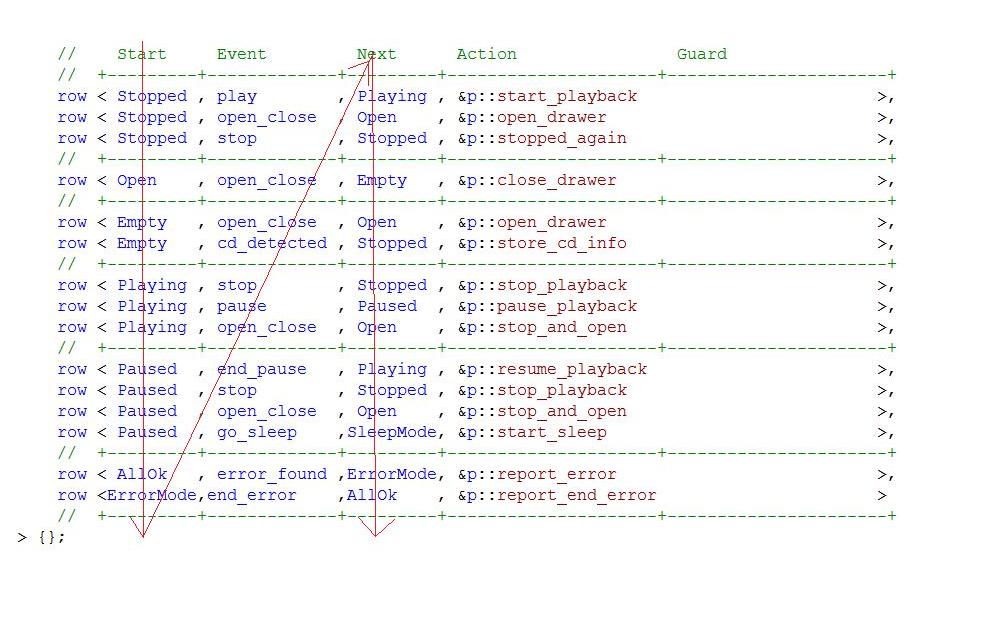Normally, one does not need to know the ids are generated for all the states of a state machine, unless for debugging purposes, like the pstate function does in the tutorials in order to display the name of the current state. This section will show how to automatically display typeid-generated names, but these are not very readable on all platforms, so it can help to know how the ids are generated. The ids are generated using the transition table, from the “Start” column up to down, then from the “Next” column, up to down, as shown in the next image:

Stopped will get id 0, Open id 1, ErrorMode id 6 and SleepMode (seen only in the “Next” column) id 7. If you have some implicitly created states, like transition-less initial states or states created using the explicit_creation typedef, these will be added as a source at the end of the transition table. If you have submachine states, a row will be added for them at the end of the table, after the automatically or explicitly created states, which can change their id. The next help you will need for debugging would be to call the current_state method of the state_machine class, then the display_type helper to generate a readable name from the id. If you do not want to go through the transition table to fill an array of names, the library provides another helper, fill_state_names, which, given an array of sufficient size (please see next section to know how many states are defined in the state machine), will fill it with typeid-generated names.